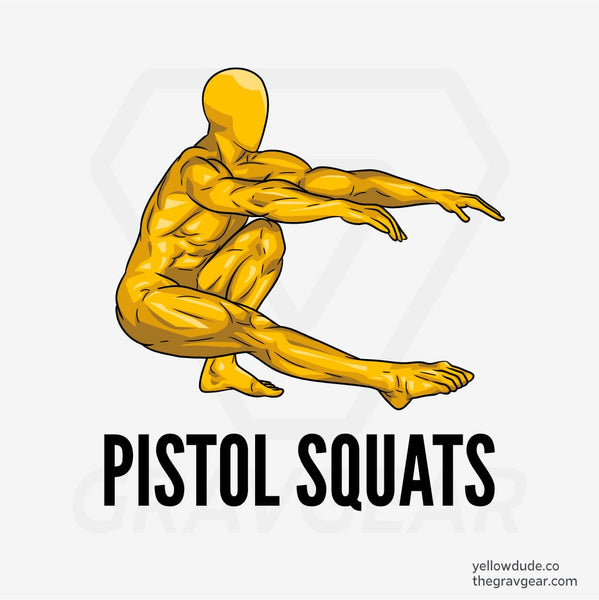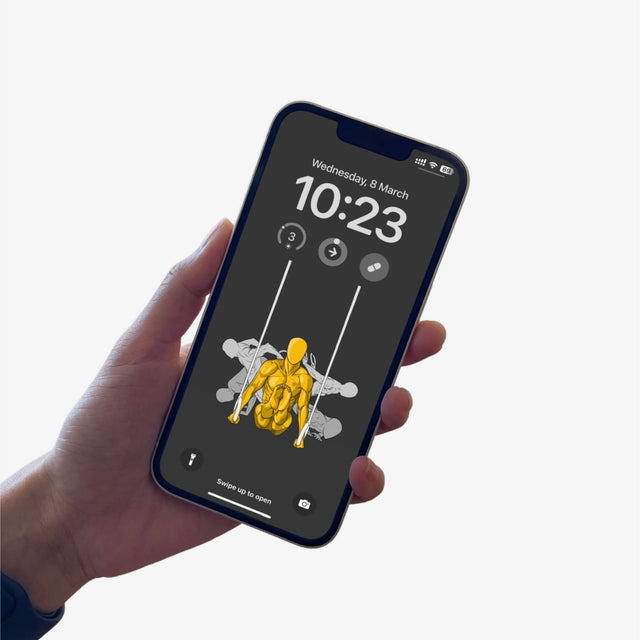Complete Calisthenics Skills List
Calisthenics training is the best way to gain strength and build an awesome physique all by using only your own bodyweight.
There are many calisthenics skills, and some of them can be broken down into basic and advanced levels. Once you become more experienced in progressive calisthenics workouts, you will learn exactly how to train all the different skills.
This article will discuss all the calisthenics skills that you can learn for free, in the park or in your own living room. It will also explain why you need to practice these skills and how they can be beneficial for particular body parts.
Push-Up

The most basic skill is push-up. It trains your triceps, pectorals, and anterior deltoids. If you are not able to do this exercise properly yet, you should practice doing it on your knees first until you can do at least 10 reps easily. Then start working towards full-range pushups by leading with your chest instead of your stomach.
Pull-Up

The number one upper body pulling exercise. Most people overestimate their pull-up strength and underestimate the amount of work they need to put in for this skill. It is especially true to perform a perfect pull-up.
The pull-up is the best bodyweight exercise for your lats, teres major and minor, infraspinatus, rhomboids, and biceps. For beginners, it's better to start with dead hang on the bar to build up foundation of gripping strength. Do these pull-up alternatives if you can't do a full bodyweight pull-up just yet.
Muscle-Up
For beginner and intermediate, the first muscle-up unlocking moment is very unforgettable and you can't wait to do more. It is a combination of pulling and pushing strength that makes muscle-up the ultimate bodyweight exercise for your back, shoulders, and arms.
Chin-Up

Your first chin-up is a big milestone for your pulling strength. It shows how much work you have been putting into working those biceps. Chin-ups are actually easier to perform compared to pull-ups because it is utilizing the stronger muscles in the motion, such as the biceps and brachialis. This is why you should train as many chin-ups as possible as it can help to build your pull-up strength as well.
Handstand

One of the best fundamental moves you should train since day one. It strengthens your shoulder and wrists and helps to improve your overall balance and coordination. Very few can move to an advanced level without a solid handstand skills. It is a skill that you can take with you anywhere without equipment, and it will make you feel like a superhero!
Handstand Push-Up
The handstand push-up is a skill that is very beneficial for building massive, 3D shoulders. It not only works the anterior deltoids but also the tricep muscles in ways that are different than doing regular bench presses. You have to have strong wrists to perform this exercise correctly though, so be sure to spend some time developing this skill.
L-Sit

The L-sit is an inhuman core and upper body strength exercise that can be done anywhere, with or without apparatus. It requires you to keep your body in a perfectly straight line while holding yourself up with just your abs. The L-sit trains the whole core, the hip flexors, the lower back, the abs, and even the serratus anterior muscles.
V-Sit
The v-sit is an L-sit variation exercise that is easier to practice than the full L-sit. It requires you to lean back slightly while holding yourself up with your abs. The V-shape position of the body increases the difficulty level significantly compared to the L-sit, so it can be used as a stepping stone for learning the L-sit.
Maltese
The Maltese is an advanced level skill that requires wrist strength and flexibility. It is a straight arm handstand position in which your torso remains parallel to the ground, while you are resting your weight on top of your arms with your shoulder blades squeezed together.
Leg Raise

It trains your lower abs while also activating some of the external oblique muscles that are responsible for rotational strength. If you perform leg raises by hanging on gymnastic rings or bar, it becomes harder and challenges your scapula flexibility and grip strength as well.
Handstand Walk
A great exercise to develop balance and coordination that is good for your proprioceptive nervous system. In some sense, hand walking is a very challenging skill as it has many steps to go through before you can stroll along the floor with no help from your hands.
Pistol Squat

The pistol squat is an incredible leg exercise that can be safely performed by anyone, of any age. You will gain tremendous control and strength in the legs. However, you need to ensure that you have enough ankle flexibility to perform the full range of motion for this skill. You can train toward it gradually, starting off with just working on your balance and overtime practicing the one-leg squat drill before trying it fully loaded.
Planche

The planche is one of the hardest bodyweight exercises that will take you to a whole new planet. Needless to say, this skill is the reason to drag many of us to start calisthenics. It requires serious strength in all four limbs and will at least take years of strict training to get there. It is simply incredible for your shoulders, chest, back, core, arms, and wrists. If you ever reach the full planche, be sure to show it off and turn heads!
Planche Push-Up
One of the most impressive bodyweight exercises you can do. The Planche push-up is a combination of strength, flexibility, and coordination. It takes years to master this skill because it requires tremendous tricep strength to hold yourself up in that position. If you ever reach this level, you will definitely feel like your training just paid 500% in dividends.
Handstand Press-Up
The handstand press-up is a great exercise for working on your tricep and shoulder strength. It will also improve the overhead lockout in the front and back lever, and it is even harder than doing a full planche push-up.
Human Flag

Another flashy skill that seems easy but is a lot harder than it looks. This move requires a tremendous amount of upper body strength, and your core will have to be superhuman in order for you to hold yourself parallel to the floor. The flag is essentially a straight-arm back lever combined with a front lever, which makes it pretty tough indeed. Also known as "side lever".
Ring Support Hold

Simple but powerful. Ring support holds are a great move to work on both your grip and core muscles. It activates the stabilizing muscles in the shoulders, arms, and back like nothing else. Do it with L-sit position for harder progression. It demands a great deal from all your stabilizer muscles.
Iron Cross

Even your elite street workout performer could not perform iron cross. This skill is incredibly humbling because it requires great strength in your back, arms, and shoulders. It will not only improve your coordination but also challenge the muscles around the scapulae to perform better for you on future skills.
Legless Rope Climb

The legless rope climb is a great exercise to work on all your pulling muscles as well as grip and core strength. It can be taxing on the body so make sure you have enough general physical preparation before attempting it.
One Arm Pull-Up

The hardest pull-up variation you can do. Few people have succeeded in reaching this level and it requires a huge amount of strength in your lats, biceps, grip, and core muscles. Regular pull up will be like child play for you after this skill.
One Arm Chin-Up
The one arm chin-up is a great exercise for all of your pulling muscles. You can gradually work on it by using the false grip and performing the one arm pull-up drill to get your lats strong enough so you can finally do a regular chin-up with one arm.
Skin the Cat
The skin the cat is a great exercise to work on your body awareness, coordination, and strength in your shoulder. It can be an essential part of your exercise progression for every other skill that requires the pulling muscles to be stronger than your push muscles. Also known as "cat climb" or "reverse muscle up".
German Hang

It requires your lats to be strong enough so you can lift your body with one arm while keeping the length in your spine. This exercise develops great pulling strength which will come in handy for many other skills down the road.
Pseudo Planche Push-Up
It is an impressive combination of strength and flexibility. It requires tremendous tricep strength to keep yourself parallel to the floor while doing a push-up with your feet elevated on a box, low bar, or other object. The pike position will especially activate the hard-to-target muscles around the shoulder blades that are responsible for keeping the scapulae in place.
Back Lever

The back lever is a great exercise to develop tremendous pulling strength. It will also improve your overhead lockout in the front and back lever, along with your core stability muscles to help you keep yourself parallel to the floor. Back lever is also easier to acquire than the front lever.
Front Lever

Another great pulling exercise that requires a strong back and grip. Improve your overhand grip strength by doing front levers on a low bar, rings, or even paralletes. It resembles an advanced straight-arm pullover with a scapular retraction which makes it pretty unique.
Back Bridge
A great move to develop full-body tension for an advanced level in your calisthenics. It requires many muscles to keep the straight form and it will strengthen your grip, hip flexors, back, shoulders, arms to help you progress faster with the advanced exercises.
Dragon Flag

Many refer to the dragon flag as the ultimate core exercise because it requires you to use every core muscle there is. It also activates the erector spinae which are pretty much inactive in most people and it will give your abs the strength and challenge they need for a six-pack.









